The Scat is one of the fish species known to science almost from the beginning of scientific naming. Scatophagus argus was already described in 1766. This first description refers to a red scat. The name “rubifrons” for red scats that is always bandied about in the hobby is a purely fanciful name with no scientific value. We have now received quite adorable red scats from Indonesia, which are about the size of a 1 Euro coin. As small juveniles red scats are vertically striped, as you can see on the pictures. It is not until they are 4-5 cm long that the striped pattern changes to a dotted pattern.
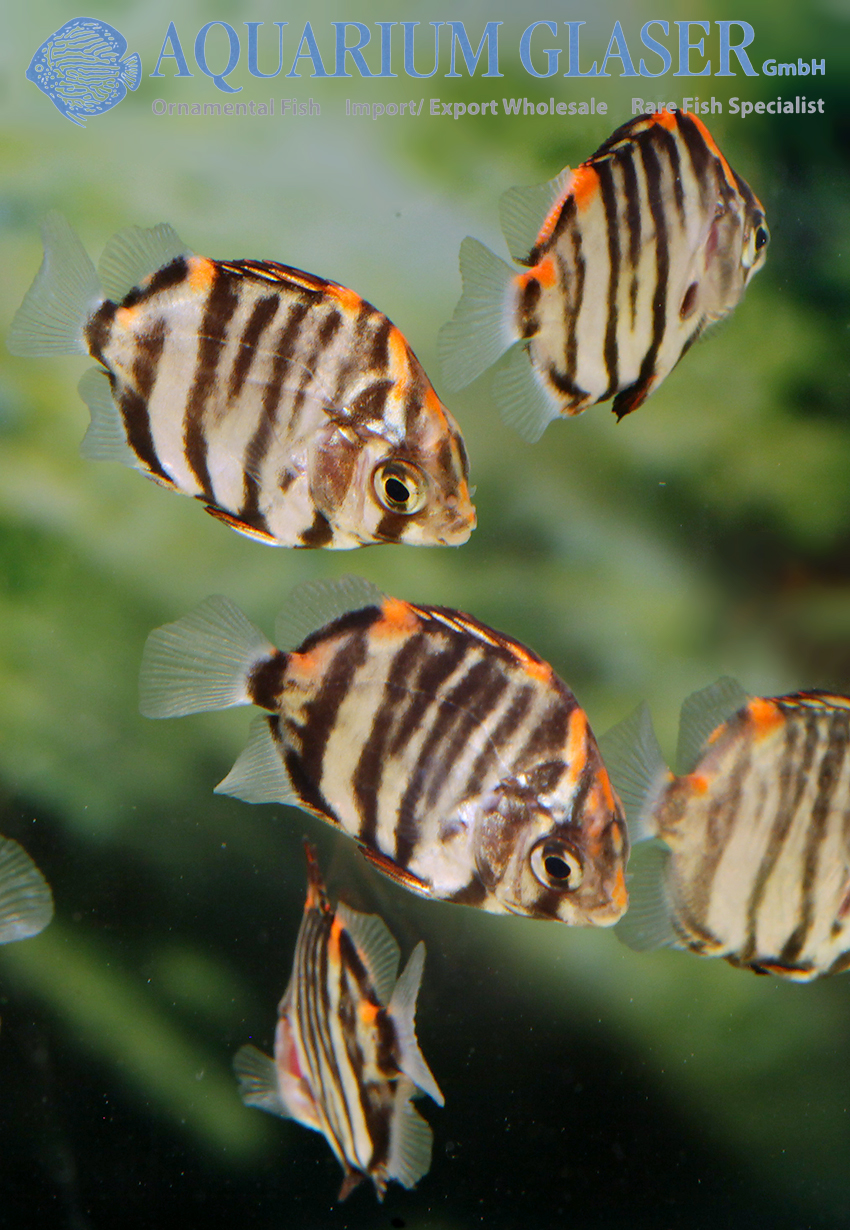
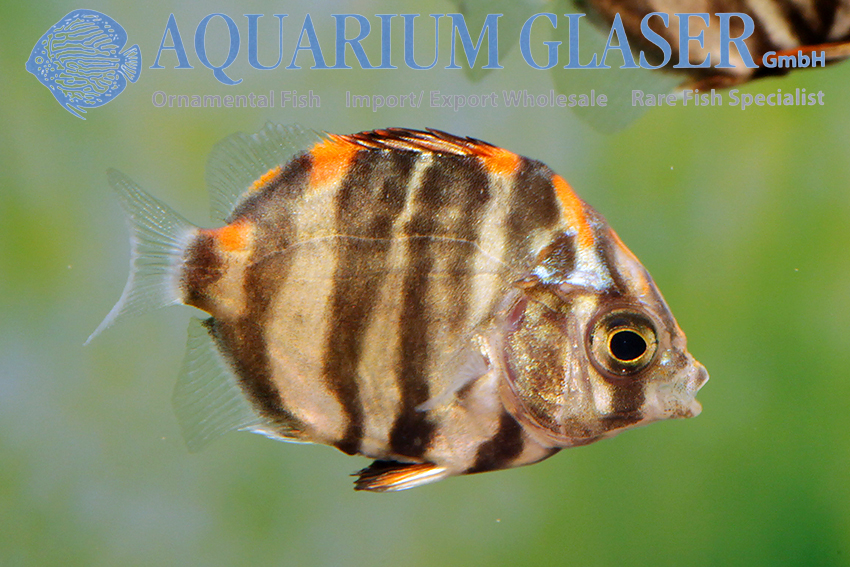
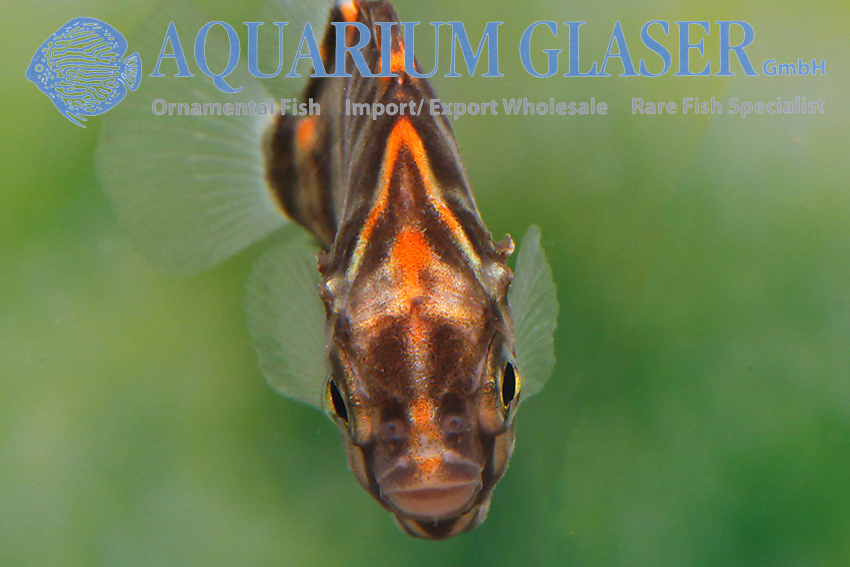
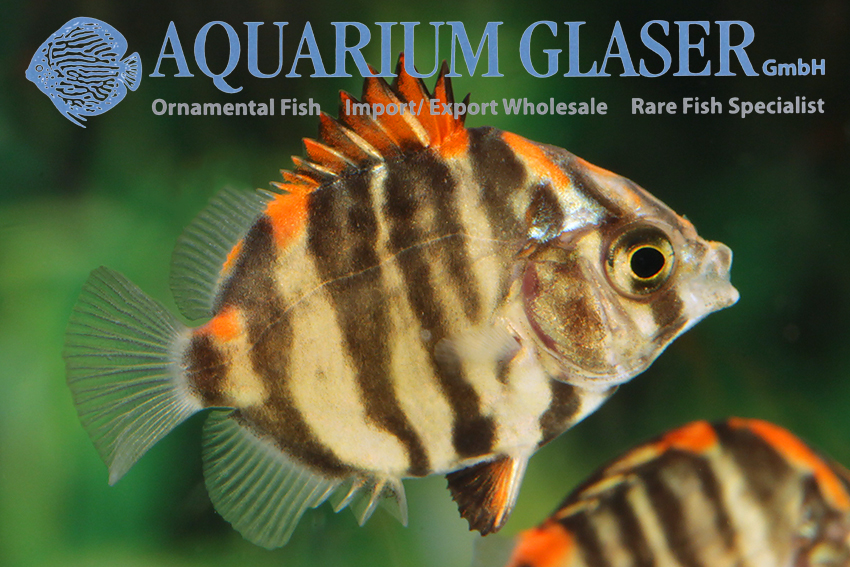
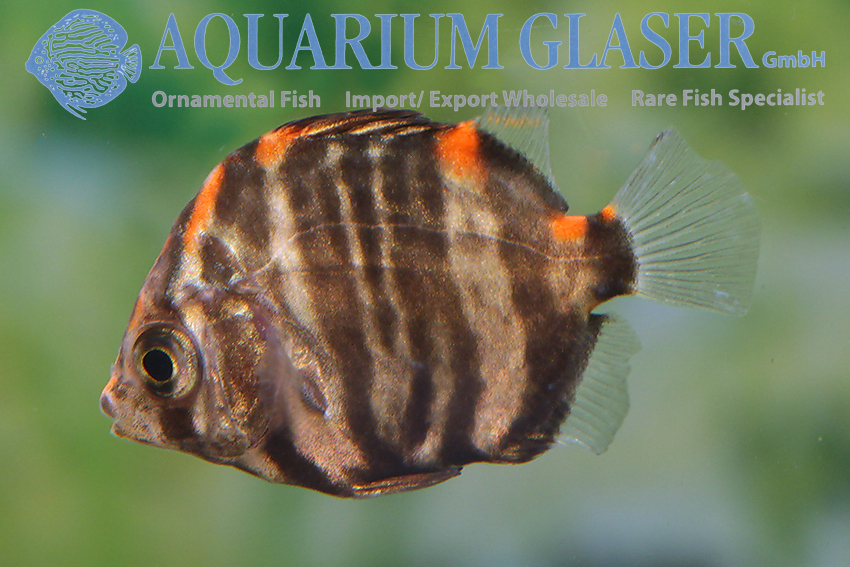
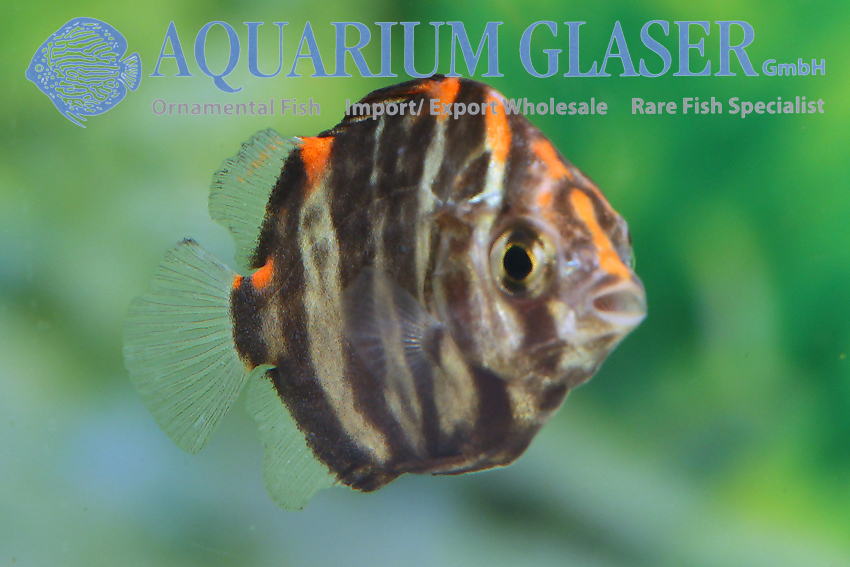
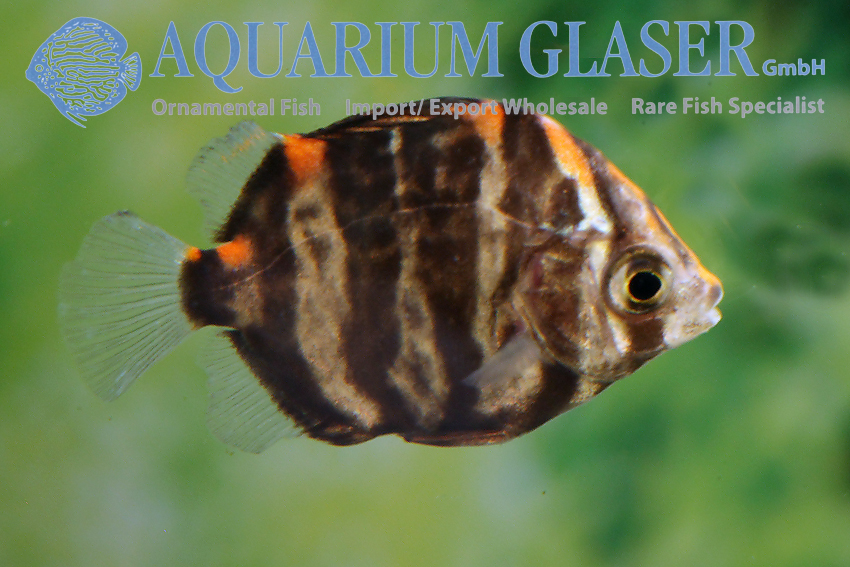
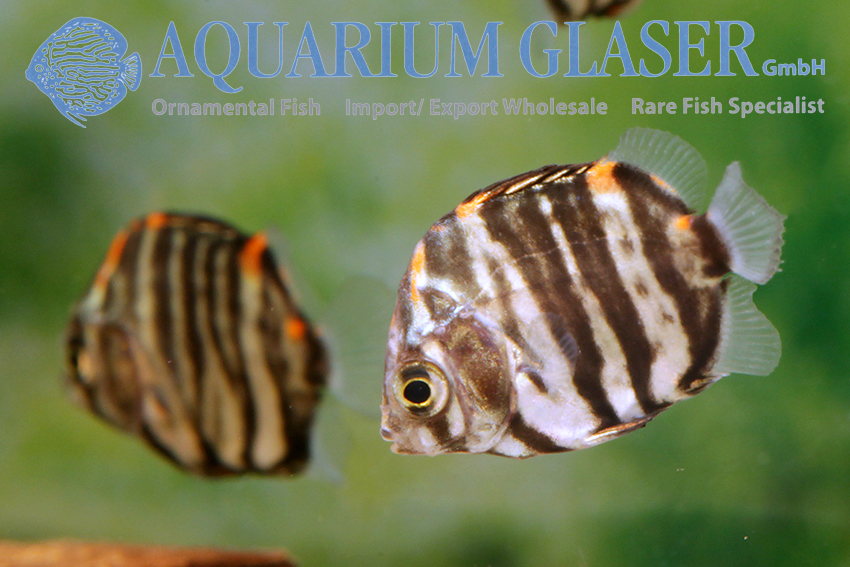
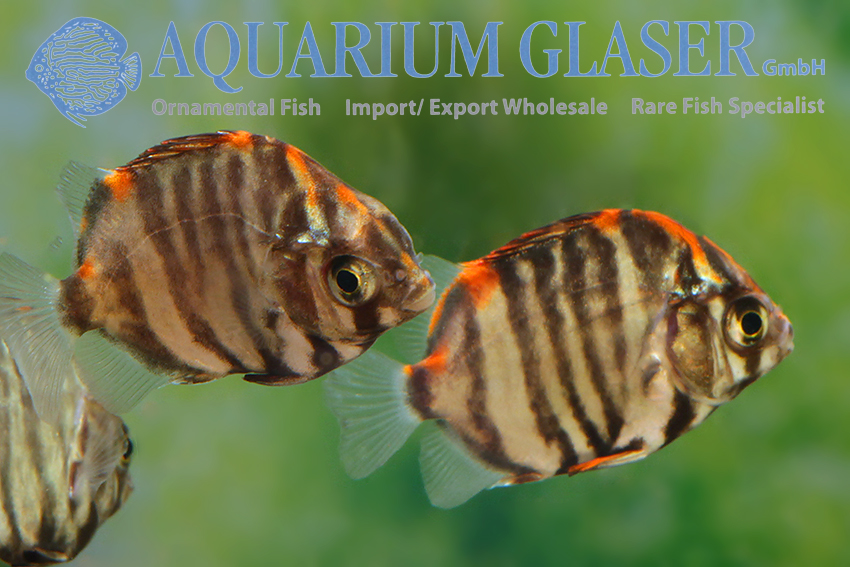
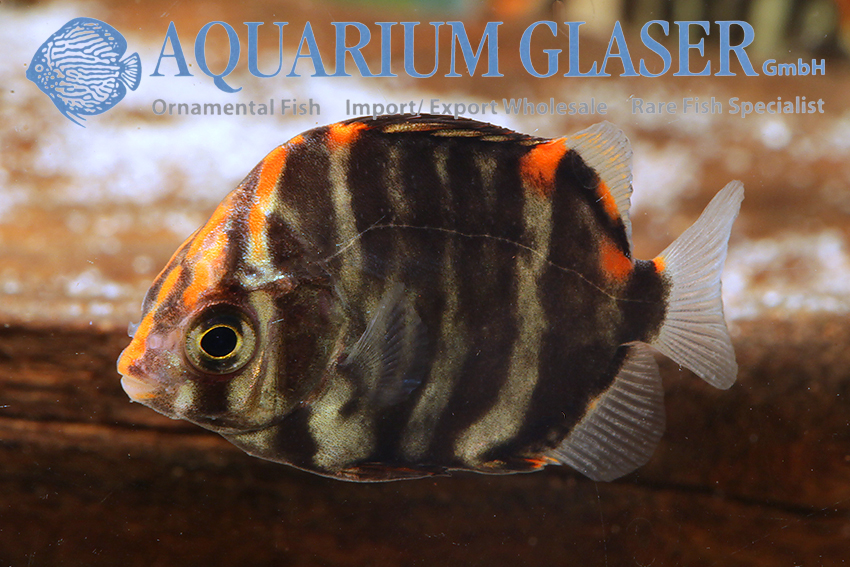
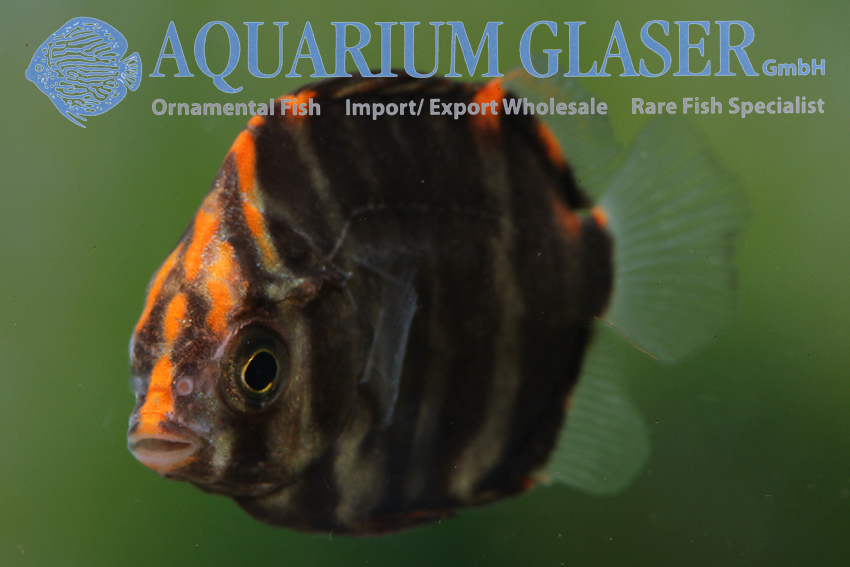
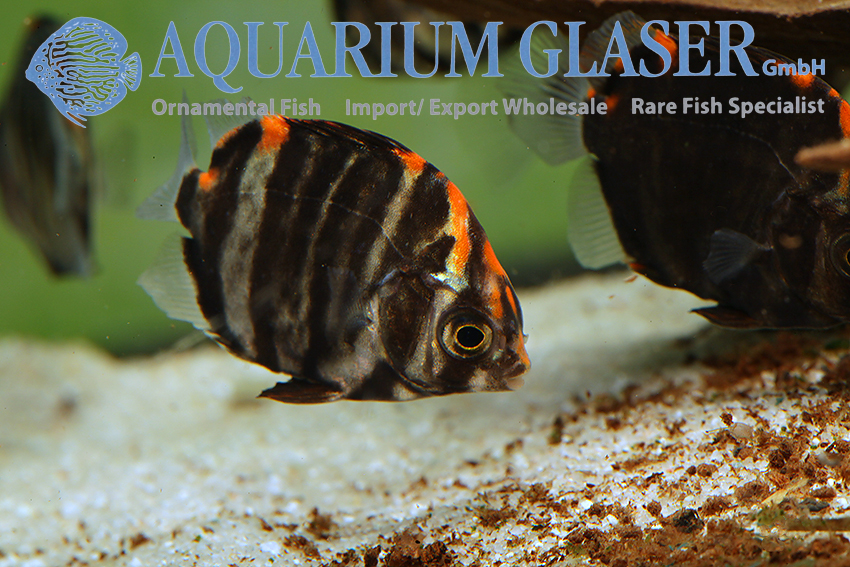
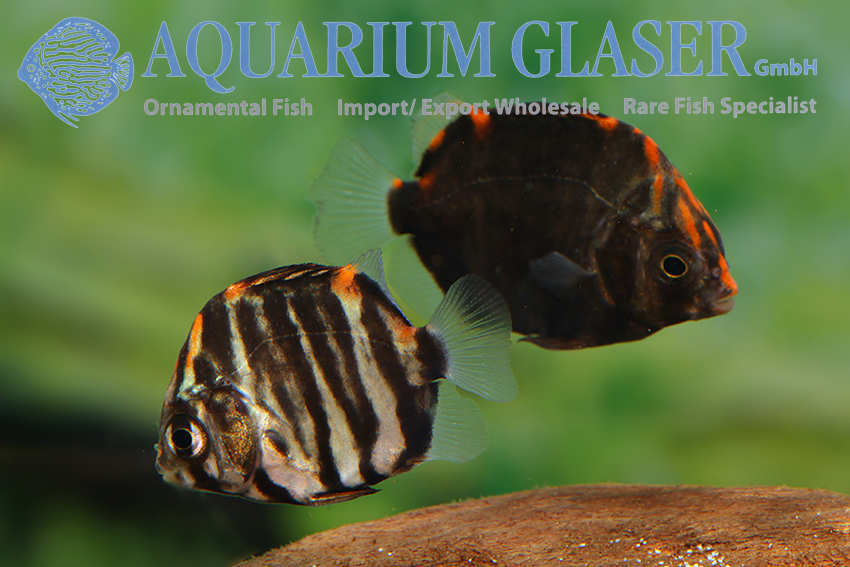
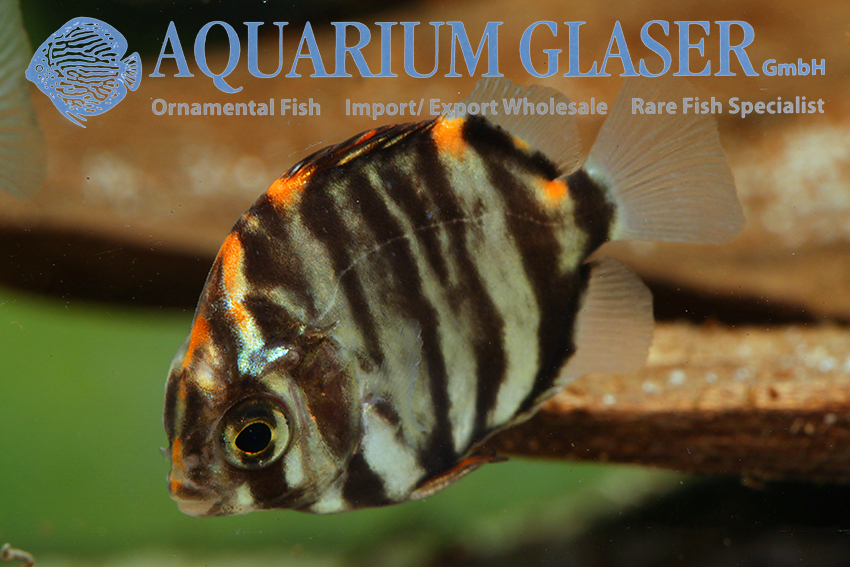
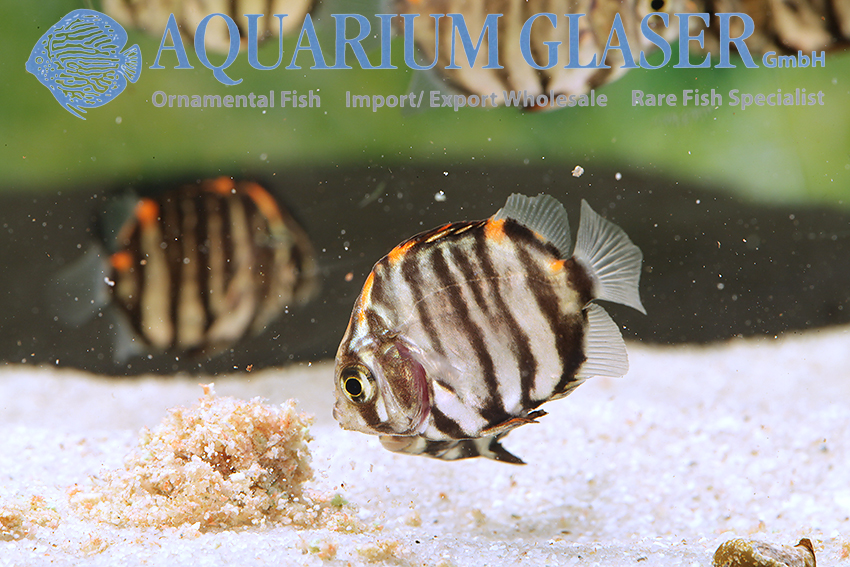
Scats use virtually any food source, they are opportunists. Studies in nature showed that larvae (scats spawn in the sea, this is also where larvae develop) eat mainly plant microplankton near the water surface. Juveniles migrate to the mangrove. Here they eat small particles both free-floating and bottom-dwelling. These are diatoms, animal plankton, aufwuchs and mulm. Adults will eat anything that fits in their relatively small mouths, but especially aufwuchs and mulm. But the absolute favorite food is filamentous algae. Scats prefer these to any other food. In the aquaristic literature one often reads that scats are herbivores. However, they are not stricly herbivorous, but omnivorous!
As euryhaline fishes, scats can be kept in fresh, brackish or marine water. The fish do not care. But the pH should never drop below 7.5 for long periods of time, this is very important. Otherwise scats will get seriously ill and may even die. The maximum size of scats is about 30 cm, a size that is usually not reached in nature or in the aquarium. Usually they stop growing at about 15-20 cm in both habitats. Then you can also distinguish the sexes: Males are more high-backed and have a steeper forehead, they also grow larger than females. Scats are free spawners without brood care. They do not spawn in freshwater, for this you need a marine aquarium.
For our customers: the animals have code 454800 on our stock list. Please note that we supply only wholesale.
Text & photos: Frank Schäfer




